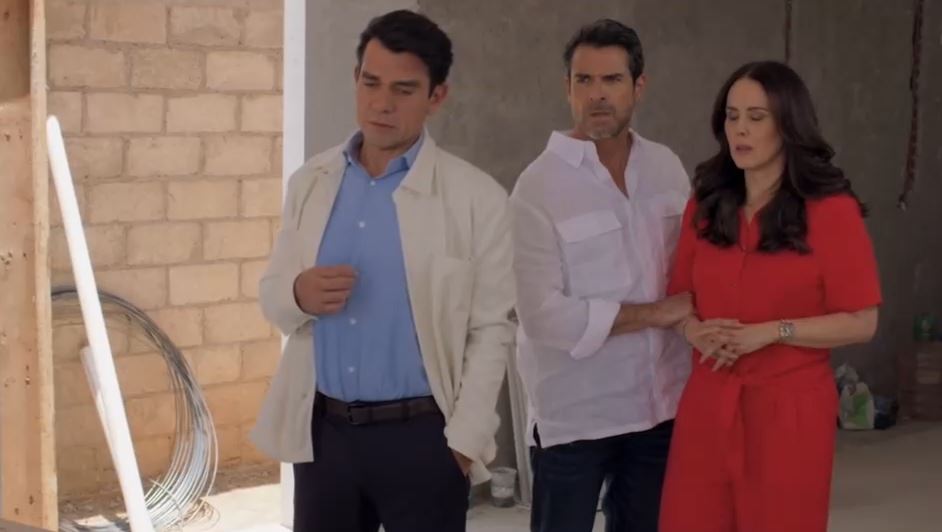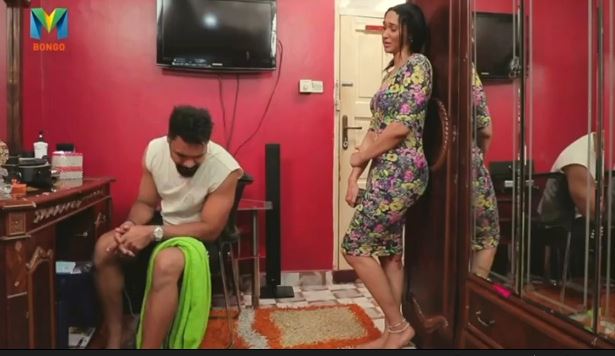LG OLED evo G3 vs. Hisense A6K: A Comprehensive Comparison for the Kenyan Market
For Kenyan consumers seeking a television in 2025, the LG OLED evo G3 (2023 model, e.g., OLED55G3PUA) and Hisense A6K (2023 model, e.g., 55A6K), both available in secondary or refurbished markets, represent opposite ends of the TV spectrum. The LG G3, a premium OLED with Micro Lens Array (MLA) technology, offers stunning visuals and gaming prowess, while the Hisense A6K, a budget 4K LED, prioritizes affordability and basic performance. This article compares their quality, costs, and target audience, with prices in Kenyan Shillings (KSh) tailored for the Kenyan market, using data from RTINGS.com, WhatHiFi.com, and TechRadar.com.
Overview of the TVs
LG OLED evo G3
The LG G3 (2023) is a 4K OLED TV with a WOLED panel enhanced by MLA for boosted brightness, powered by the α9 Gen 6 AI Processor and webOS 23. Designed for wall-mounting, it’s ideal for cinematic viewing and gaming, available in 55-, 65-, 77-, and 83-inch sizes.
Hisense A6K
The Hisense A6K (2023) is a 4K LED TV with a VA panel, direct LED backlighting, and no local dimming. Equipped with the Hi-View Engine and VIDAA U6 OS, it’s built for budget-conscious users seeking streaming and basic viewing, available in 43-, 50-, 55-, 65-, 75-, and 85-inch sizes.
Quality Comparison
1. Picture Quality
- LG OLED evo G3 (based on RTINGS.com, Tom’s Guide):
- Panel Type: WOLED with MLA, self-lit pixels.
- Brightness: ~1,360 cd/m² (HDR 10% window), ~512 cd/m² (SDR real scene), excellent for bright and dark rooms.
- Contrast: Infinite, perfect blacks, no blooming.
- Color Performance: ~98.72% DCI-P3, ~72.79% Rec.2020, vibrant and accurate colors.
- Viewing Angles: Wide (~63°), ideal for group viewing.
- HDR Support: HDR10, Dolby Vision, HLG.
- Upscaling: α9 Gen 6 AI Processor, excellent (~8.0/10), great for low-quality Kenyan broadcasts.
- Reflections: Excellent handling (~1.1% total reflections), glossy finish.
- Hisense A6K (based on WhatHiFi.com, TechRadar.com):
- Panel Type: VA LCD, direct LED, no local dimming.
- Brightness: ~300 cd/m² (HDR 10% window, estimated), ~250 cd/m² (SDR), suited for dim rooms.
- Contrast: ~4,000:1 native, decent blacks but prone to backlight bleed.
- Color Performance: ~80% DCI-P3 (estimated), less vibrant colors.
- Viewing Angles: Narrow (~25°), for direct viewing.
- HDR Support: HDR10, Dolby Vision, HLG, DTS Virtual:X.
- Upscaling: Hi-View Engine, poor (~4.8/10), struggles with low-quality content.
- Reflections: Moderate handling (~6.0% total reflections), semi-glossy finish.
Verdict on Picture Quality: The LG G3 delivers superior picture quality with infinite contrast, perfect blacks, and high brightness (~1,360 cd/m² vs. ~300 cd/m²), making it ideal for HDR movies and varied lighting in Kenyan homes. Its wide viewing angles (~63° vs. ~25°) and excellent upscaling (~8.0/10) enhance group viewing and low-quality local broadcasts. The Hisense A6K’s VA panel offers decent contrast (~4,000:1) for dark rooms, but its low brightness, lack of local dimming, and weaker upscaling (~4.8/10) limit HDR performance and clarity. Both support Dolby Vision, but the LG’s OLED technology dominates for cinematic experiences.
2. Gaming Performance
- LG OLED evo G3:
- Refresh Rate: 120Hz, 4K/120Hz via four HDMI 2.1 ports.
- Input Lag: ~10.3ms (4K@60Hz), ~5.5ms (4K@120Hz), highly responsive.
- Features: VRR, FreeSync, G-SYNC Compatible, ALLM, Game Optimizer.
- Game Mode: Near-instantaneous response (~0.2ms).
- Hisense A6K:
- Refresh Rate: 60Hz, no 4K/120Hz (HDMI 2.0).
- Input Lag: ~15.0ms (4K@60Hz, estimated), adequate for casual gaming.
- Features: ALLM, no VRR or FreeSync.
- Game Mode: Basic response.
Verdict on Gaming: The LG G3 is far superior for gaming with a 120Hz refresh rate, lower input lag (~10.3ms vs. ~15.0ms), and advanced features like VRR and FreeSync, making it ideal for PS5, Xbox Series X, and PC gaming. The Hisense A6K’s 60Hz panel and lack of VRR limit it to casual gaming, unsuitable for next-gen consoles.
3. Sound Quality
- LG OLED evo G3: 4.2-channel speakers, 60W output, Dolby Atmos, good (~7.5/10 score).
- Hisense A6K: 2.0-channel speakers, 20W output, DTS Virtual:X, adequate (~6.0/10 score).
Verdict on Sound: The LG G3’s 60W output and 4.2-channel system deliver richer, more immersive audio, outperforming the Hisense A6K’s basic 20W setup. Both benefit from a soundbar for cinematic sound in larger Kenyan rooms.
4. Smart Features and Connectivity
- LG OLED evo G3: webOS 23, Magic Remote, AirPlay 2, HomeKit, Google Assistant/Alexa, four HDMI 2.1, three USB, Bluetooth 5.0, Wi-Fi 5, NextGen ATSC 3.0 tuner.
- Hisense A6K: VIDAA U6, Google Assistant/Alexa, three HDMI 2.0, two USB, Bluetooth, Wi-Fi 5, Chromecast.
Verdict on Smart Features: The LG G3’s webOS is intuitive with AirPlay 2 and four HDMI 2.1 ports, ideal for gaming and smart home integration. The Hisense A6K’s VIDAA U6 offers a fluid interface with Chromecast and extensive app access, but its HDMI 2.0 ports and lack of AirPlay limit versatility. The LG’s ATSC 3.0 tuner future-proofs for broadcast changes.
5. Design and Build
- LG OLED evo G3: Ultra-slim (~0.96 inches, 65-inch), 0.3-inch bezels, VESA 300×300, ~23.9 kg, excellent reflections (~1.1%), wall-mount only.
- Hisense A6K: Thicker (~3.2 inches, 65-inch), 0.4-inch bezels, VESA 400×200, ~18.5 kg, moderate reflections (~6.0%).
Verdict on Design: The LG G3’s sleek, wall-mount-only design is ideal for modern Kenyan homes, with superior reflection handling. The Hisense A6K’s lighter, stand-based design is more practical for traditional setups but less elegant.
Cost Comparison (in Kenyan Shillings)
Prices are estimated based on 2023 pricing, adjusted for 2025 secondary/refurbished markets, using an exchange rate of 1 USD = 130 KSh (as of August 19, 2025, 6:32 PM EAT). Local pricing may vary due to import duties and availability. Check with retailers like Jumia, Kilimall, or authorized dealers.
LG OLED evo G3 Prices (based on RTINGS.com, Tom’s Guide)
- 55-inch: $1,800–$2,000 ≈ KSh 234,000–260,000
- 65-inch: $2,400–$2,600 ≈ KSh 312,000–338,000
- 77-inch: $3,200–$3,400 ≈ KSh 416,000–442,000
Hisense A6K Prices (based on WhatHiFi.com, adjusted)
- 55-inch: $350–$450 ≈ KSh 45,500–58,500
- 65-inch: $500–$600 ≈ KSh 65,000–78,000
- 75-inch: $700–$800 ≈ KSh 91,000–104,000
Verdict on Cost: The Hisense A6K is significantly more affordable (~KSh 45,500–104,000 vs. ~KSh 234,000–442,000), offering excellent value for budget-conscious buyers. The LG G3’s premium price reflects its OLED technology and advanced features.
Target Audience
- LG OLED evo G3:
- Ideal For: Cinephiles, gamers, and families in controlled or bright rooms. Its perfect blacks, wide angles, and gaming features suit premium home theater and gaming setups in Kenyan homes.
- Use Case: Best for HDR movies, competitive gaming, and group viewing.
- Budget: KSh 234,000–442,000, for buyers prioritizing top-tier quality.
- Hisense A6K:
- Ideal For: Budget-conscious viewers in dim rooms. Its affordability and decent performance suit casual streaming and small households.
- Use Case: Ideal for basic streaming and viewing in direct seating setups.
- Budget: KSh 45,500–104,000, for cost-sensitive buyers.
Final Verdict
Winner: LG OLED evo G3
The LG OLED evo G3 is the superior choice for its infinite contrast, perfect blacks, and high brightness (~1,360 cd/m² vs. ~300 cd/m²), delivering a cinematic HDR experience ideal for both bright and dark Kenyan living rooms. Its wide viewing angles (~63°), excellent upscaling (~8.0/10), and advanced gaming features (120Hz, ~10.3ms input lag, VRR) make it perfect for movies, gaming, and group viewing. However, its premium cost (~KSh 234,000–442,000) and burn-in risk are considerations.
The Hisense A6K offers decent contrast (~4,000:1) and Dolby Vision support at a fraction of the cost (~KSh 45,500–104,000), making it a compelling budget option for dim rooms. Its narrow viewing angles (~25°), low brightness, and poor upscaling (~4.8/10) limit its versatility for HDR or group settings.
Recommendation: Choose the LG OLED evo G3 for premium HDR visuals, gaming, and group viewing in varied lighting, with a budget of KSh 234,000–442,000. Opt for the Hisense A6K for affordable, basic performance in dim rooms, with a budget of KSh 45,500–104,000. Verify pricing through Kenyan retailers like Jumia, Kilimall, or authorized dealers as of August 19, 2025.





You must be logged in to post a comment.